Case

Case

Float valves, or ball valves, are used to regulate fluid levels in tanks. In addition to the valve body, a typical float valve has a spherical or similarly shaped hollow ball attached to the valve through a lever or arm. The ball, or “float,” rides on, near, or beneath the surface of the fluid, and its up and down motion is transferred mechanically to the valve, opening it or closing it, depending on the position of the float with respect to the tank. Float valves are employed to create completely mechanical level control systems.
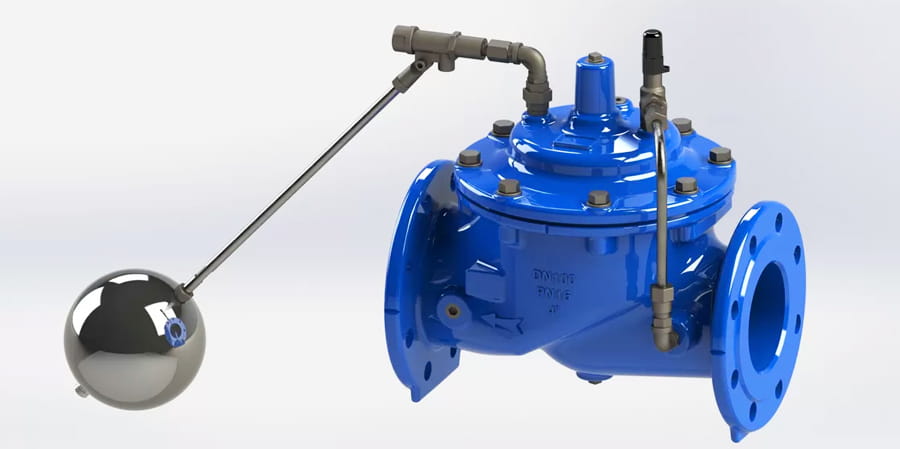
Can control the liquid level of water tower or sink. It is suitable for automatic water supply system of various pools (boxes) and water towers in industrial and mining enterprises and civil buildings.
The valve body adopts the full-channel streamline design, the flow is large, the sealing effect is good, the maintenance is simple, flexible and durable, the liquid level control accuracy is high, the water level is not disturbed by the water pressure and close not leaking.
The upper chamber is connected to the control with the float valve and the ball valve is fixed to the tank level. The water tank level drops float ball valve opens, main valve opens, water supply to water tank; When the liquid level reaches the float valve position, the float valve is closed, the main valve is closed and the water tank is stopped.
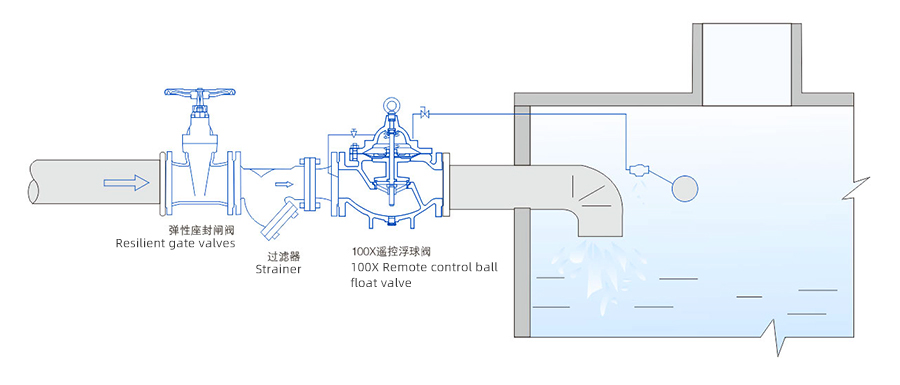
Float valves can be direct-acting, such as those used in toilet tanks, or, in some industrial incarnations, used as pilot valves to direct the operation of larger control valves. Direct-acting valves typically use cylindrical slides or diaphragms for their inlet control/shut-off.
These are controlled through the rising and lowering float via a lever, producing a mechanical advantage that holds the valve shut. Old-style toilet fill valves typify this setup.
The float diameter and lever arm may be varied to provide sufficient closing force depending on the system pressure. Some direct-acting valves offer dual functions that can top up a tank at different rates depending on demand.
Direct-acting valves sometimes use trunnion mounts to scale down the large movement of the float to the smaller movement needed to open and close the valve.
Float valves are also used for drainage control where the rise of the float detects high fluid level and directly opens an outlet, or dump, valve. These systems often couple a valve mounted on the outside of the tank with the ball mechanism at the top of the tank through a linking rod.
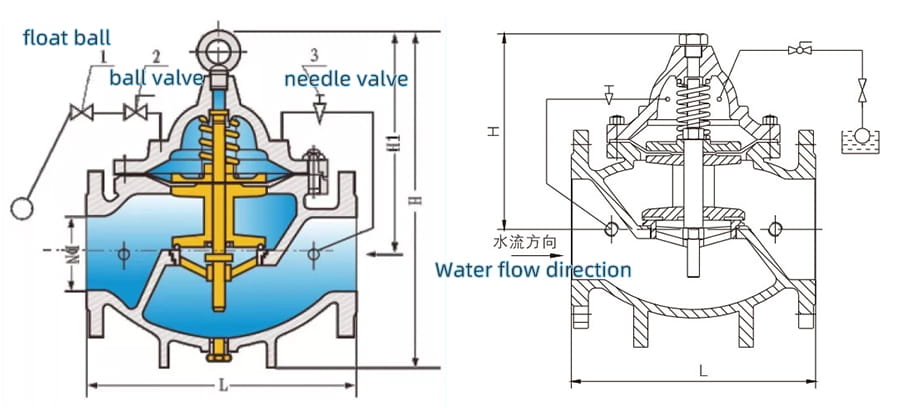
When faster fill rates beyond what the float valve produces are necessary, or where a main valve is fitted outside and near the bottom of the tank, the float valve can serve as a pilot valve, providing a control “signal” of fluid to the main valve. Such valves can be on/off or modulating, depending on the system requirements. Such systems are often fitted with vertical rods attached to the floats to extend the reach into deep tanks. Weighted chains are sometimes used as well.
The float rides the rod between low water and high water stops allowing for the tank to empty somewhat between actuation of the main valve. Main valves are usually operated from system pressure but if it is insufficient to actuate the valve, auxiliary hydraulic or pneumatic actuation is added.
Main valves are typically diaphragm style and open against springs backed by pressure from the pilot valve line. The float actuated pilot valves usually make use of multiple ports to direct fluid to, and accept fluid from, the main valve. Where electrical pumps are involved, the pump can be set to run for a specified period and deadhead once the tank is filled, simplifying controls.
Aside from their ubiquitous use to control water levels in toilet tanks, float valves are found in many industrial applications including basins, open and closed storage tanks, reservoirs, condensate tanks, swimming pools, etc.
An advantage of float valves is that they require no electrical controls, making them an obvious solution for remote tanks such as watering troughs where electrical power is not available.
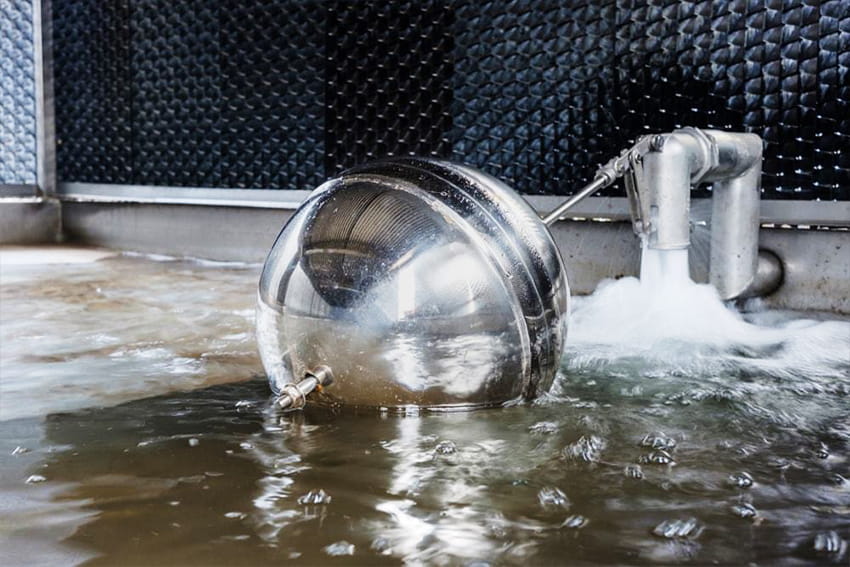
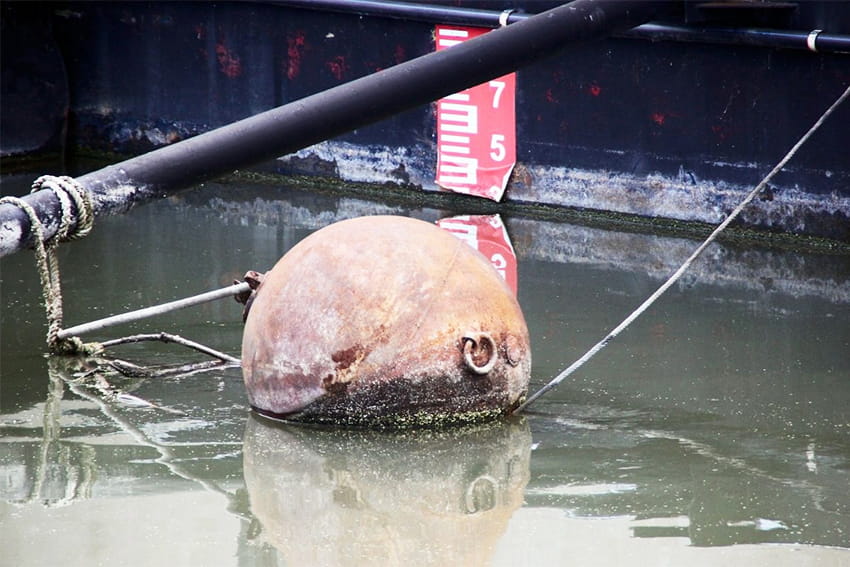
Floats may be located directly in the tank or are sometimes placed in a “stilling well” to prevent turbulence caused by filling from damaging components of the float linkage.
Floats valves used for potable water applications are generally installed with an air gap to prevent siphoning of possibly contaminated tank water back into the supply.
When specifying float valves used in conjunction with main valves, a choice for the main valve is made between globe (straight through) or angle patterns. Angle patterns are used to turn the flow 90° as might be used in directing it downward into a tank.
Material choices for valve bodies are often among bronze, cast iron, and stainless steel. Floats are constructed from a variety of materials as well, including plastic, copper, stainless steel, etc. Often floats in use on vertical-rod systems are weighted to keep them submerged without applying excessive force to the valves. These systems often employ counterweights in the linkages to help optimize performance.
Another common manifestation of float valves is found in carburetors, where the float maintains a consistent fuel level in the carburetor bowl to keep the hydrostatic pressure at the metering jets constant.
Float valves are completely mechanical in their operation. Floats are also used in pumped systems as well to send a level signal to start or stop a pump. A sump pump will generally incorporate such a float. The float may house an electrical switch and connect to the pump through a tether.
Or, the float may be rigidly attached to the pump with an arm or a lever and be set to actuate an external limit switch in response to a rising sump level.
This article presented a brief discussion of float valves including the types, applications, and how they work. For more information on related products, consult our other guides.